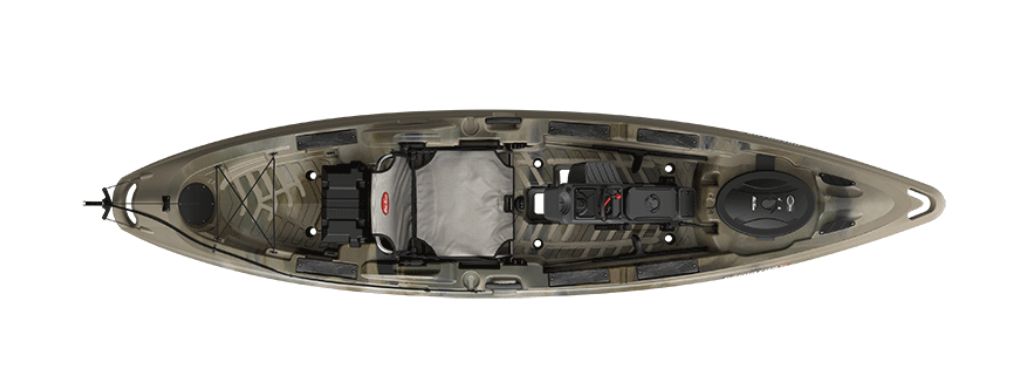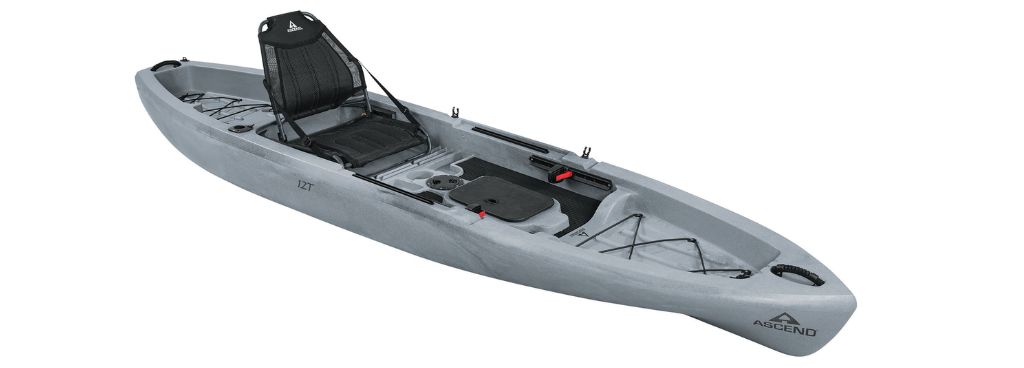Stories Worth Reeling In...
Last Updated on September 20, 2023
Anglers continue to discuss whether to use a sit-inside kayak or a sit-on-top kayak for fishing. Both kayak types have distinct advantages and disadvantages, making it difficult to choose the ideal option for fishing. Let’s look at the key distinctions between sit-in vs. sit-on kayaks for fishing to help you make an informed decision.
A sit-in kayak offers greater shelter from the elements and is ideal for cooler weather or turbulent waves. Sit-on-top kayaks, on the other hand, provide superior stability and more room to roam around, making them ideal for warm weather and calm waters.
The choice between a sit-in or sit-on-top kayak for fishing will be determined by several considerations, including the type of fishing you’ll be doing, the conditions you’ll be fishing in, and your level of comfort.
When it comes to “sit inside vs. sit on top kayak for fishing”, the best option will ultimately depend on your personal demands and preferences.
Table of Contents
When searching for a kayak, the first decision you must make is whether a sit-inside or a sit-on-top will best suit you and your paddling ambitions.

Sit-in fishing kayaks are more sleek and classic in appearance. The seat is situated below or at the waterline on the hull, and the top of the bow encases your legs and hips, providing further protection from the elements, especially when a spray skirt is used to surround the cockpit.
Sit-inside kayaks are often faster and track better than their broader sit-on-top rivals due to their lower seating position. They also have improved secondary stability, making them suitable for rough waves.
The disadvantage, particularly with smaller, lighter versions, is that cockpits can be somewhat snug for larger or heavier paddlers.

Sit-on-top kayaks, on the other hand, have a cockpit placed higher above the water, allowing more legroom and making seat adjustments easier while on the water. These kayaks must be broader to compensate for the greater center of gravity because the seat is higher.
This construction lends a raft-like sensation to sit-on-tops, and some models, such as the Sea Eagle 385fta, are stable enough to stand and cast without fear of tipping over.
They are, however, slower and more difficult to monitor in windy conditions. However, they are more user-friendly in general, making them an ideal alternative for beginners and casual paddlers.
The lack of protection from the elements is the main disadvantage of sit-on-top kayaks, so be prepared to get wet in turbulent conditions or if the weather turns bad.
If you live in a warm region, this may not be an issue, but individuals who paddle in moderate or colder climates may appreciate the extra protection provided by a sit-in kayak.
The hull design of a kayak, as well as its length and width, are the key characteristics that influence its tracking and speed. When comparing kayaks of the same type with the same hull shape, length, and width, there is minimal difference between a sit-on-top and a sit-in kayak.
The most user-friendly are sit-on-tops. They’re quite stable, easy to get in and out of, and have no sense of confinement. They’re also self-bailing, which means they contain little holes (called “scupper holes“) in them that allow water to drain through.
Another advantage of sit-on-tops is that you can easily slip on and off them. All of these characteristics make the sit-on-top kayak an excellent choice for nervous paddlers, warm locations, and paddling with children who enjoy swimming.
The disadvantage of sit-on-top kayaks is that you will almost certainly get wet when paddling, whereas sit-inside kayaks allow you to keep dry.
Sit-insides keep your lower body warm by shielding it from the wind. Sit-inside kayaks are ideal for paddlers who prefer to stay dry while paddling in cooler water and see the kayak as more of a vehicle for travel than a toy.
One disadvantage of sit-inside kayaks is that you don’t have as much freedom in and out of the water. And if you do flip for any reason, recovery will be difficult because your kayak will most likely be full of water.
Recreational sit-inside kayaks, like sit-on-tops, are incredibly stable, entertaining, and simple to use. They have spacious cockpits, so there’s no reason to feel cramped inside. Some even have waterproof chambers accessible through deck hatches.
It’s critical to grasp the distinctions between sit-on-top and sit-in kayaks, as each has advantages and disadvantages.
For individuals who prefer fishing in warm weather, a sit-on-top kayak is an ideal option. It offers easy entry and the opportunity of getting wet without having to worry about the kayak filling up with water. A sit-on-top kayak’s learning curve is also shorter, and they are often more stable.
Sit-in kayaks, on the other hand, are better suited to individuals who prefer fishing in cooler weather. They offer increased speed, control, maneuverability, and watertight storage space.
They are, however, more difficult to enter and exit and can become hot and stuffy in warmer weather.
Finally, while picking between a sit-on-top and a sit-in fishing kayak, it’s critical to examine your unique demands and preferences. The amount of gear you intend to bring, the fishing circumstances, and your degree of comfort are all significant considerations.
Sit-in kayaks can be narrower due to their lower center of gravity, allowing for faster speeds with less effort.
They may feel claustrophobic to some individuals and can be harder to exit and reenter compared to sit-on-top kayaks.
Sit-on-top kayaks are considered unsinkable because they have no cockpit for water to get trapped into.
The width and length of the kayak play a significant role in determining its speed, with longer and narrower kayaks being faster.
Sit-on-top kayaks are often considered more comfortable for long days of paddling due to the freedom to adjust seating positions.
Sit-on-top kayaks provide anglers with ease and convenience that sit-in kayaks do not, but each form of fishing kayak has its advantages. There is no such thing as right or wrong. It is best to make a decision after experimenting with various kinds and brands to decide which type is ideal for your fishing style.
If you want to save money on a fishing kayak, seek those that are particularly advertised as fishing kayaks or angler kayaks. Buying a pre-equipped kayak will be less expensive than designing a custom fishing kayak.
Always keep the required kayak safety equipment on hand and make sure to have fun and keep safe out there!